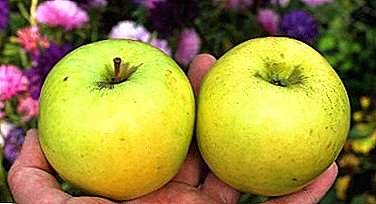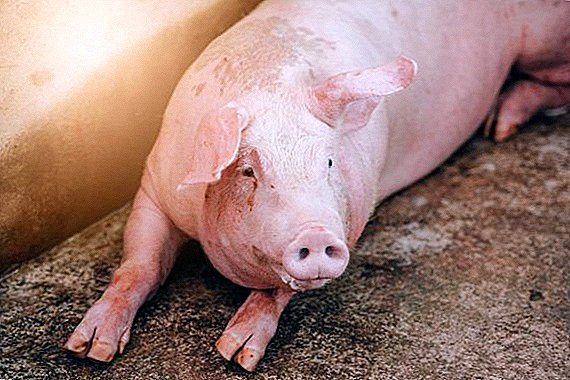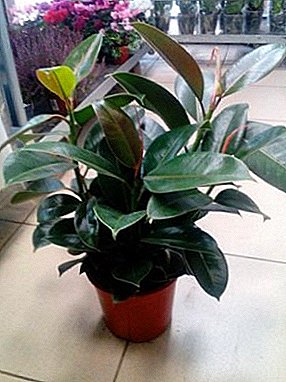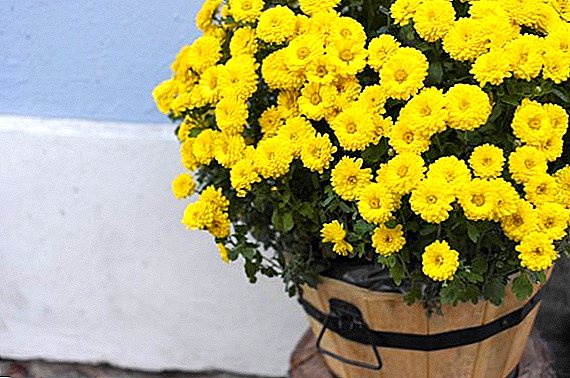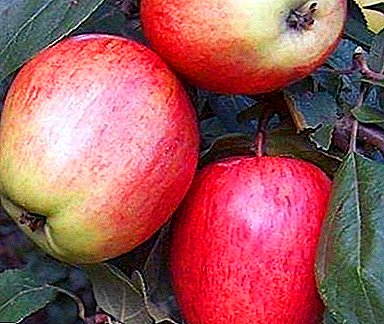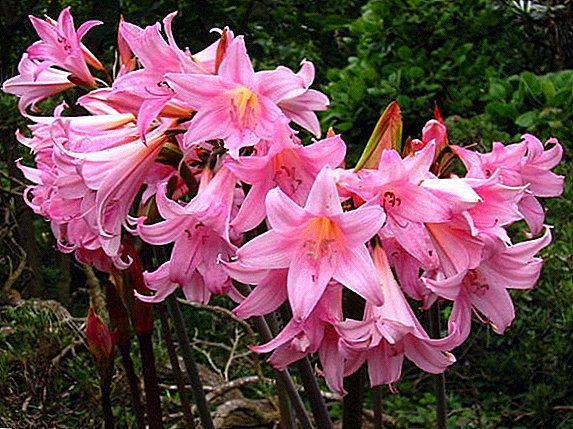 Large inflorescences resembling lilies, a variety of colors and delicate aroma of amaryllis make it one of the most popular flowers for growing.
Large inflorescences resembling lilies, a variety of colors and delicate aroma of amaryllis make it one of the most popular flowers for growing.
Proper planting of amaryllis at home
For planting Amaryllis choose healthy, dense bulbs, having developed roots. On the planting material there should be no mechanical damage, such bulbs are rejected. With the defeat of the disease, visual signs of manifestation are not always immediately noticeable, but an unpleasant sweet smell will tell about them.
Preparation of bulbs for planting
Before planting, it is necessary to remove dead tissue from the bulbs, they are highlighted in dark color. After that, the planting material must be treated with fungicides, can be etched in a solution of potassium permanganate for half an hour. After disinfection, the onions are dried for 24 hours. If after these procedures, the bulbs are in doubt and have visible spots, process with "Fitosporin" or "Maxim" and dry again.
How to choose a pot
 First of all, amaryllis in a pot should be steady, the flower “leaves” the leaves when developing, besides it has a large inflorescence, in order to avoid falling, the pot is chosen massive, heavy. The size of the container is chosen according to the size of the bulb, between the onion and the walls of the dishes should be no more than 5 cm, and the distance to the bottom is sufficiently deep - the flower has a developed root system. The best material for the pot is unglazed ceramics - this breathable material will provide good soil aeration.
First of all, amaryllis in a pot should be steady, the flower “leaves” the leaves when developing, besides it has a large inflorescence, in order to avoid falling, the pot is chosen massive, heavy. The size of the container is chosen according to the size of the bulb, between the onion and the walls of the dishes should be no more than 5 cm, and the distance to the bottom is sufficiently deep - the flower has a developed root system. The best material for the pot is unglazed ceramics - this breathable material will provide good soil aeration.
Did you know? In 1984, the Gardiner couple founded the Museum of Ceramics in Toronto, Canada. In 2000, the museum numbered up to 3,000 thousand exhibits, where, in addition to specimens of contemporary art, were exhibits of pre-Columbian America, the era of the Italian Renaissance, English, Chinese and Japanese ceramic heritage.
Plant the bulb with the blunt side down, falling asleep with soil, about a third of the bulb is left above the surface. Then the soil is rammed, watered with warm water and placed near the window.
What should be the ground and drainage
At the bottom of the pot should be drainage, you can use expanded clay, river pebbles or small pieces of broken brick. Drainage layer - up to 3 cm, additionally does not hurt the hole at the bottom of the pot, but if it is not provided, it is possible to scatter the material for drainage (in a small amount) on the surface of the soil after planting.
Independently prepare the soil for planting amaryllis in the following ways: 
- garden soil, turf layer, river sand (coarse) and humus in proportion - 1: 1: 1: 0.5;
- turf soil, humus and sand in proportion - 1: 1: 2.
Amaryllis care during flowering
Plant care is simple, the main thing is to follow all the rules. Proper and timely care will help you achieve re-flowering of amaryllis.
Lighting and temperature
The best place for amaryllis will be the southeast or southwest windowsill, The south side is also suitable, but in the daytime, slightly shade the plant from the sun. From time to time, rotate the plant so that the trunk does not bend, but grow straight. In the spring, during development, the plant needs light and heat, but the temperature should not rise above + 25 ° С, the lower limit is + 18 ° С.
Watering and humidity
It is important to know how often to water amaryllis. The first watering after planting is carried out when the stem of the plant reaches 10 cm, the earlier watering will slow down flowering, and all the forces will go to the development of the leaves. During the flowering period (about three weeks) need regular watering and good lighting. Make sure that the soil is moderately wet, do not let the water stagnate. When watering, pour water around the bulb and not on it. Humidity does not play a big role in growing a flower, but spraying leaves and buds is welcome if the air is dry. After flowering, watering is gradually reduced.
Important! Spraying blooming flowers is not recommended. Spraying of the bulbs is prohibited during the rest period.
Top dressing and fertilizer of the soil
 Fertilizer for amaryllis can be purchased at the store. The choice for flowering plants is quite wide: "Emerald", "BIO VITA", "Bona Forte", "Kemira Lux", "Ideal", "Agricola", "Ava" and many other preparations for indoor flowers. Top dressing begins during the formation of buds, once every two weeks. In the flowering period - once a week.
Fertilizer for amaryllis can be purchased at the store. The choice for flowering plants is quite wide: "Emerald", "BIO VITA", "Bona Forte", "Kemira Lux", "Ideal", "Agricola", "Ava" and many other preparations for indoor flowers. Top dressing begins during the formation of buds, once every two weeks. In the flowering period - once a week.
When the plant fades, fertilizing is reduced and stopped during dormancy. When choosing a fertilizer for a flower, focus on those that contain more phosphorus and potassium than nitrogen.
Features care in a dormant period
After blooming, amaryllis must be prepared for a rest period. To do this, help the plant to get rid of dry leaves and inflorescences, pruning them. Many growers do not recommend pruning, so that all the juices are transferred to the bulb, but if the plant itself does not discard the dry parts, then they should be carefully removed, leaving about 3 cm to the bulb. After that, the flower is placed in a cool dark place at a temperature of + 10 ° C. Watering and fertilizing are not needed, sometimes spray the soil. The desired humidity in the room is about 70%, sudden changes in temperature are undesirable.
Attention! The rest period must be at least three months. Otherwise, the young plant will not have enough strength for development and flowering. Respecting the rest period extends the life of the plant.
How to store amaryllis in the winter
Amaryllis is not a frost-resistant plant, therefore a flower digging on the open ground is dug. The bulbs in pots are stored in a dry room with a temperature range from + 5 ° C to + 10 ° C. Storage lasts about two months. In the same way, you can store the bulbs in boxes. Tender bulbs of a plant do not withstand sub-zero temperatures, so make sure that there are no temperature drops and drafts in the storage area. Overgrated bulbs are inspected before planting, cleaned from brown dry scales, if there are suspicious spots, they are removed by treating the sections with activated charcoal.
How to transplant amaryllis
 Difficulties in how to seat amaryllis, no. The procedure is carried out every three to four years. Transplantation is carried out after the flower spike has blossomed. A few days before transplantation, the plant is watered abundantly. Then the amaryllis is removed from the soil clod, which is gently shaken off.
Difficulties in how to seat amaryllis, no. The procedure is carried out every three to four years. Transplantation is carried out after the flower spike has blossomed. A few days before transplantation, the plant is watered abundantly. Then the amaryllis is removed from the soil clod, which is gently shaken off.
Next you need to inspect the root system, damaged, decayed or dry roots cut off. The cut is treated with wood ash. The bulb can have babies, they need to be carefully separated, and then used as planting material.
Before you transplant an old amaryllis bulb into a new pot, plant need to feed. To do this, insert two sticks of mineral fertilizers into the soil under the roots ("Agricola" has a long-lasting effect).
Amaryllis reproduction at home
Amaryllis is propagated in several ways, the timing of when to plant amaryllis depends on the choice of method. When propagating by seeds, it should be remembered that in this case the plant will bloom no earlier than five years later.
Interesting! Amaryllis is very similar to hippeastrum, even experienced gardeners sometimes identify them. Amaryllis is from Africa, and gippeastrum from South America, in addition, they can be distinguished by the bulb. In Amaryllis, the onion looks like a pear, and in hippeastrum, it is round and flattened.
Daughter bulbs
Child bulbs remain after amaryllis transplantation. Children do not need a rest period, they can be planted immediately. After planting, the onions are watered and fertilized regularly. Since the daughter bulbs grow strongly in two years, they take a pot for planting as for a large plant. After three years, you can admire the color of amaryllis.
Bulb division
 Amaryllis is propagated by dividing the bulb after the flowering period has passed. At the donor bulb cut the neck with leaves. The remaining part is cut into four lobes, thin needles are inserted into the cuts up to 15 cm long. The pot with the plant is kept under the same conditions as the growing amaryllis, and watered as the soil dries. In the spring grown onions transplanted into separate pots.
Amaryllis is propagated by dividing the bulb after the flowering period has passed. At the donor bulb cut the neck with leaves. The remaining part is cut into four lobes, thin needles are inserted into the cuts up to 15 cm long. The pot with the plant is kept under the same conditions as the growing amaryllis, and watered as the soil dries. In the spring grown onions transplanted into separate pots.
Growing from seed
In order to get the seeds of amaryllis, you need a brush to apply pollen from the stamens to the pistil of the plant. Within a month, seeds will ripen in the seed basket. Seeds are sown in the prepared soil and left until germination in a warm place with ambient lighting. When the seedlings get stronger, it is planted in pots. Keep in mind that with the seed method of reproduction the maternal characteristics of the flower may not be preserved.
The simplicity of this plant makes it a welcome guest on any windowsill. But you should consider: If there are small children or animals in the house, amaryllis should be raised higher. After all, those and others are curious, and the juice of the plant is poisonous.




